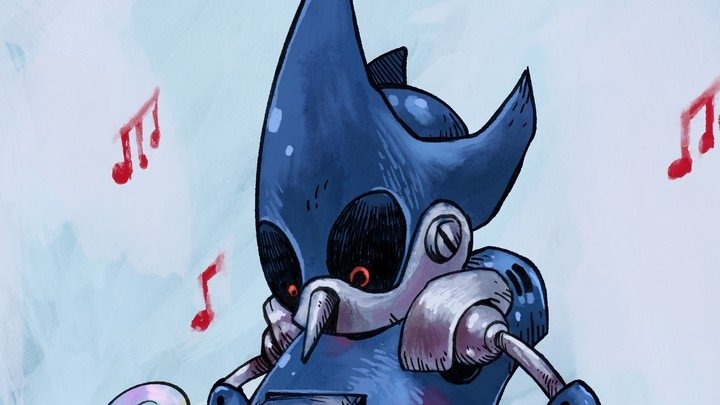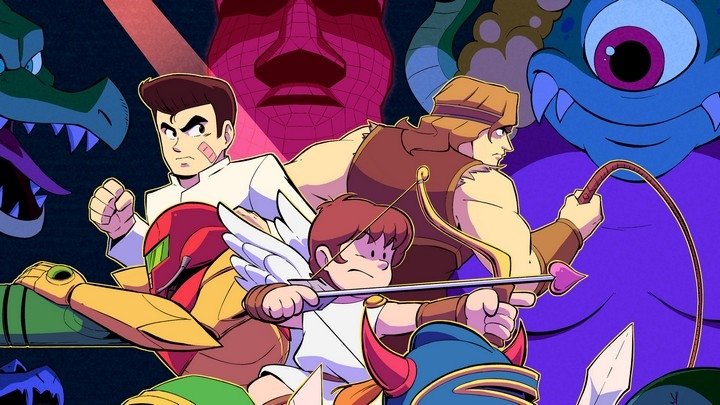Mystik Belle: The Retronauts review
A neglected breed of Metroidvania rises from the grave.
For years now, retro games have provided the go-to style for the passion projects of indie developers, owing both to their enduring love for the classics and to the relatively straightforward nature of planning and creating such games. Among this crowd, WayForward stands out as a major player, as well as one who gave rise to the scene in the first place. Founded during the 16-bit era, they shifted to portable platforms once the console space went all-in for 3D fare, toiling in obscurity until pixel art became cool again. Without ever specifically setting out to make something "retro," they just continued making the kind of games they'd always made until that became retro—and in doing so, they helped create a model that's been imitated by many up-and-coming studios.
One such outfit is Last Dimension, which is essentially the nom de guerre of one Andrew Bado. In 2013, Bado successfully Kickstarted Legend of Iya, a pet project he'd been formulating for most of his life, with plans to release in 2014. When that date slipped (as they often do), Bado put together a game called Ultionus to generate additional development funds and allow him to refine tech ultimately intended for Iya. A year later, he released Mystik Belle on Steam with the same goals in mind—and here's where WayForward comes back into the picture.

In keeping with their rise as a driving force in the retro scene, WayForward have grown from an exclusively for-hire developer to an autonomous body capable of promoting and releasing their own games (digitally, at least—they got help from XSEED for the physical versions of Shantae: Half-Genie Hero). Now they've branched out even further, filling the role of publisher for fellow indies' games—games like Mystik Belle, which they just brought to PlayStation 4 and Xbox One (with stated interest in a Switch version, before you ask). As it happens, Bado has contributed pixel art to WayForward games in years past, so it comes as little surprise that they would lend a helping hand to bring one of his to a wider audience. It's good to have friends in relatively high places.
As for Mystik Belle itself, it projects the appearance of any other non-linear side-scrolling platformer (a Metroidvania, that is) with a design as simple as you might expect of a side project. Your move set is mostly limited to jumping and shooting fireballs, which are upgraded via a rudimentary experience system, and your progress is marked by unlocking additional abilities such as a charge shot and a double-jump, which then allow you to explore more of the game world. Gaining your bearings is a little harder than it needs to be due to an early game populated with several similar-looking vertical shafts, the edges of which sink into darkness thanks to some omnipresent complex lighting effects—good for the game's spooky aesthetic, but not so much for identifying room exits without referencing the miniscule auto-map.

The moment-to-moment action is also undermined by enemies and bullets that crowd the screen, leaving your somewhat slow character and her oversize hitbox little choice but to soak up hits left and right. Note this doesn't actually translate to difficulty, as Belle suffers no hit stun or knock-back and has a generous life bar that can weather a preposterous number of collisions. Even in the event of death, you're just sent back to the beginning of the current room (the game states you also lose accumulated experience, but I never noticed any drain from my gauge). So it's not hard, but it still doesn't feel very satisfying to go about tanking damage just because there's no reason to avoid it and doing so frequently seems impossible. It's reminiscent of a certain breed of Western games of yore that used leniency to patch over dodgy design, like the life meters in so many Euroshmups.
Fortunately, the action isn't all there is to Mystik Belle; in fact, it's more of a means to a very different end, which is its adventure game elements. Knowing Bado grew up with the ZX Spectrum, it's easy to trace Mystik Belle's origins to the Dizzy series and its ilk, which remain largely unknown in the States. More than mobility or combat, these games focus on locating key items and determining their single special use somewhere in the game world, and so it goes here. Early in Mystik Belle, you'll find, in three different places, a tank of weedkiller, an empty spray pump, and a room guarded by a giant carnivorous plant; find the spray pump, bring it to the herbicide, and use it on the plant, and you're on your way. The rest of the game is filled with item-based puzzles such as this one, and while new areas are still primarily unlocked with abilities such as the aforementioned double-jump, those moves themselves come locked behind increasingly Byzantine scavenger hunts. American PC gamers will likely be reminded of the old graphic adventures made by Sierra and Lucasfilm Games, and while there's no onerous pixel-hunting here (obtainable items stand out well, and interactive scenery is indicated as such when you draw near), the puzzle logic can feel just as strained.

Mystik Belle also distinguishes itself from many modern Metroidvanias in its sheer lack of hand-holding and its willingness to let the player get lost. While there is a concrete sequence of actions that must be performed to complete the game, you're consistently left alone to explore large swaths of the map, including areas that may lead to nothing but items that won't be required until some point much further down the chain. As liberating as this is, it can also lead to unintended tedium, as the player has no way to distinguish between items that are needed right away and those that may be put to use well in the future. You're far more likely to end up with an inventory packed with items that all look like the key in the right light than you are to stumble upon each puzzle and its solution in the appropriate order. It doesn't help that there are a number of red herrings that do nothing but cause additional confusion and take up your limited inventory space; you might suppose an item literally called "Rubbish" has done everything it can to tell you it's useless, but in a game where nondescript scraps of metal and a smelly fish head are of critical importance, you won't want to leave anything to chance.
The map's open-ended structure can also lead to stretches where you'll advance deep into a new area only to be stonewalled by an obstacle miles from the last branch point, sending you retracing your steps with nothing but the rude discovery that you need to return later with a new ability. (There are shortcuts to be unlocked where the map loops back on itself, but they tend to be placed beyond these choke points, not before.) This is always the danger with letting the player go off the rails, but in a game like, say, Super Metroid, breaking sequence requires expert techniques like pinpoint wall-jumping, meaning you probably know what you're getting into by the time you can do it. Mystik Belle's permissive design is a refreshing change of pace, but it would have done better to subtly steer first-time players through cleverly-planned level design rather than leaving progress up to process of elimination or a lucky guess. If nothing else, signpost early on when they're barking up the wrong tree.
To an extent, many of Mystik Belle's shortcomings can be forgiven for its charming personality. Belle MacFae's adventure spans the course of a single night in a casually haunted witch academy and its surroundings, including a lamp-lit hamlet and a foreboding cavern dripping with sulfuric acid. The map is small enough to comprise mostly unique environments, such as the library full of animated books and the dormitory where Belle's classmates can be found safely tucked in. A great many enemies only appear in a single room in the whole game, making each one all the more memorable (my personal favorite is the ghostly pig roasts drifting around the school kitchen like Castlevania's Medusa Heads). The simple "use Item A in Location B" flow of the Dizzy games is also fleshed out via contextual dialogue and a supporting cast who move about and reveal more of themselves over the course of the night.

As for the porting job, WayForward has delivered handily with no functional issues, at least as far as the PS4 version I played. 1080p doesn't figure out to be an integer multiple of the game's original resolution, so the display is very slightly stretched, but I don't imagine anyone will notice unless they're counting rows in a screenshot. The controller vibrates continuously (and intensely) whenever you're charging your charge shot, which had me wondering if my DualShock's motors were going to give out, but you can always switch vibration off. One option that was actually removed from the 2015 Steam release is the choice of two scripts: Bado originally wrote a profanity-laden script for the game before he realized it might not be everyone's cup of tea and included a self-described "E10+" edit as well. The console release only includes the latter (and, as predicted, bears an ESRB rating of E10+), but the all-ages text feels more at home with the game's childish characters and lighthearted air anyway. Finally, you have two speed options: 100% and 125%. It seems a little strange they didn't go further with this idea, but playing at 125% speed does alleviate Belle's general pokiness and should make backtracking a bit less of an ordeal.
Despite its shortcomings, Mystik Belle has much to recommend it, from its free-form exploration to its reprisal of a forgotten sub-genre of what we now call Metroidvanias. The way it leaves the player to their own devices may not work out in every instance, but there's a rewarding sense of discovery waiting for you when you manage to slice through a Gordian knot of a puzzle in a single flash of insight. As long as you go in expecting a few mental roadblocks along the way, Mystik Belle is a fine choice for anyone searching out a bewitching experience this October.




